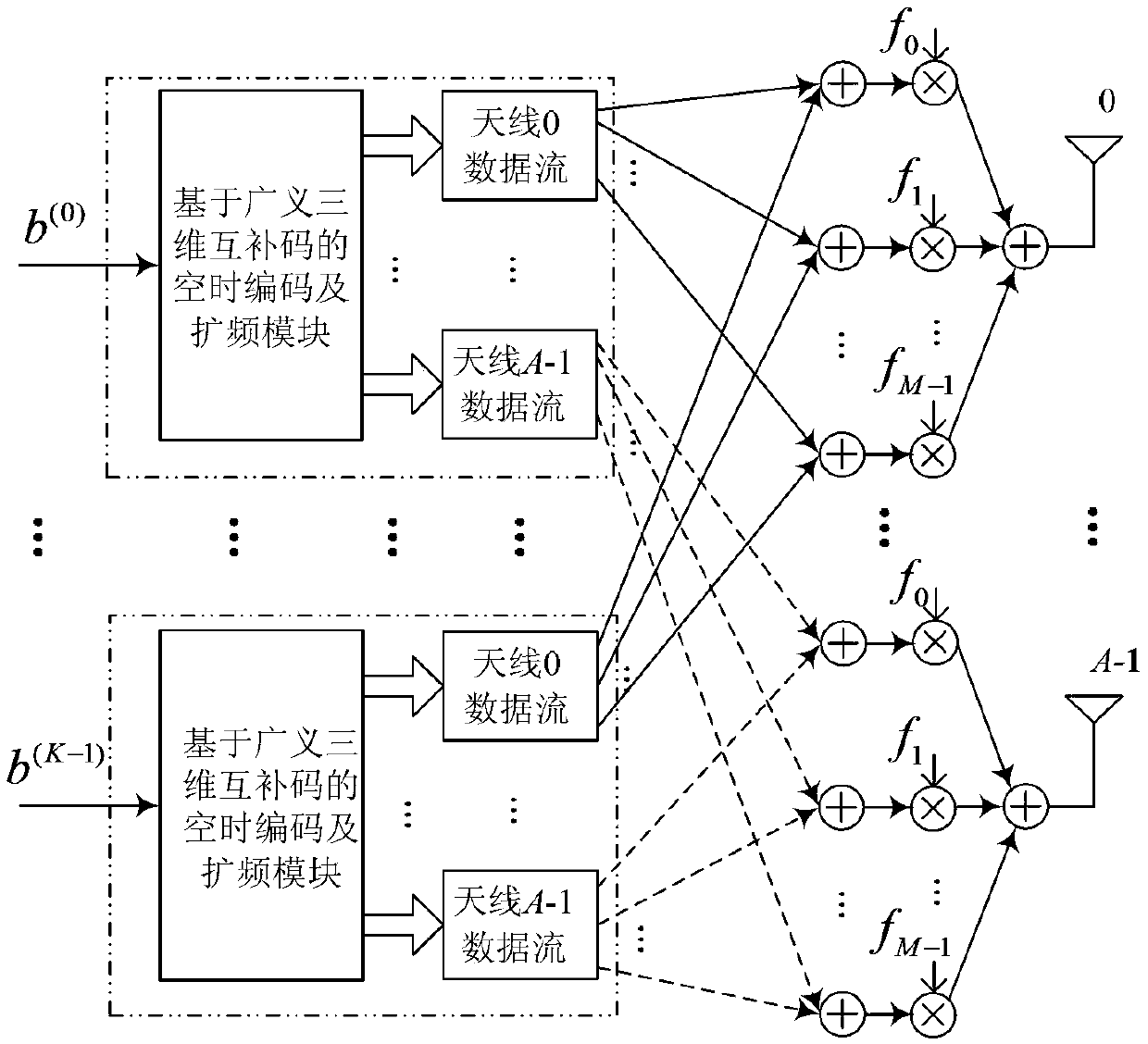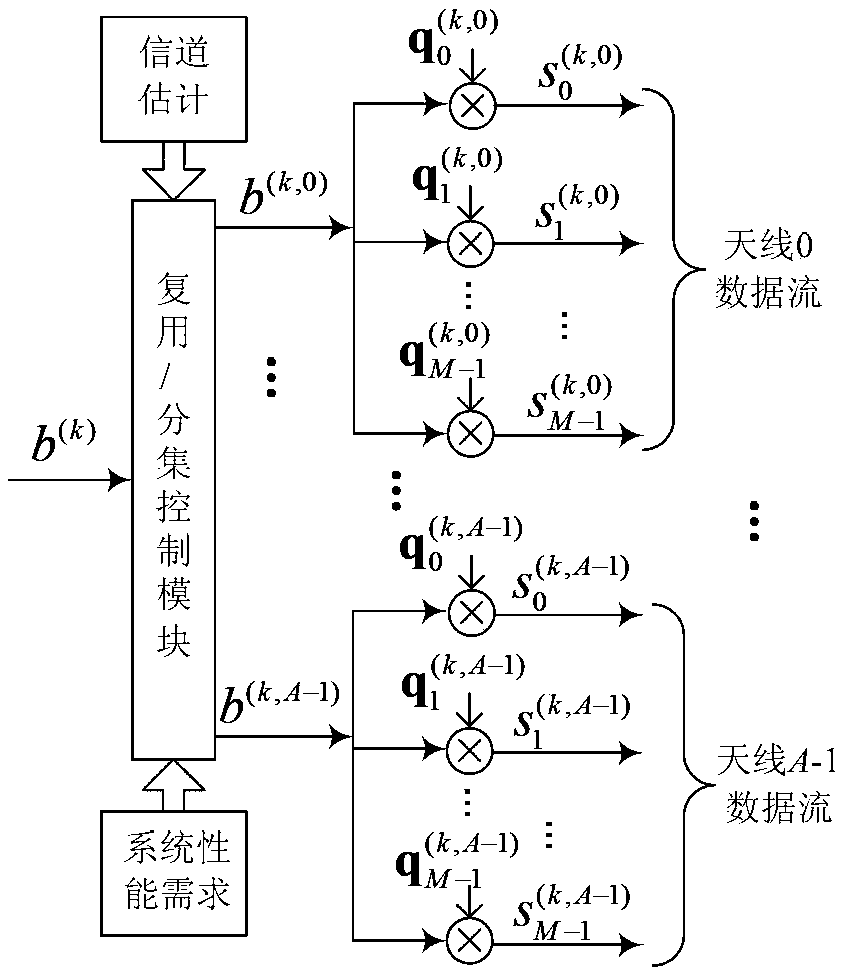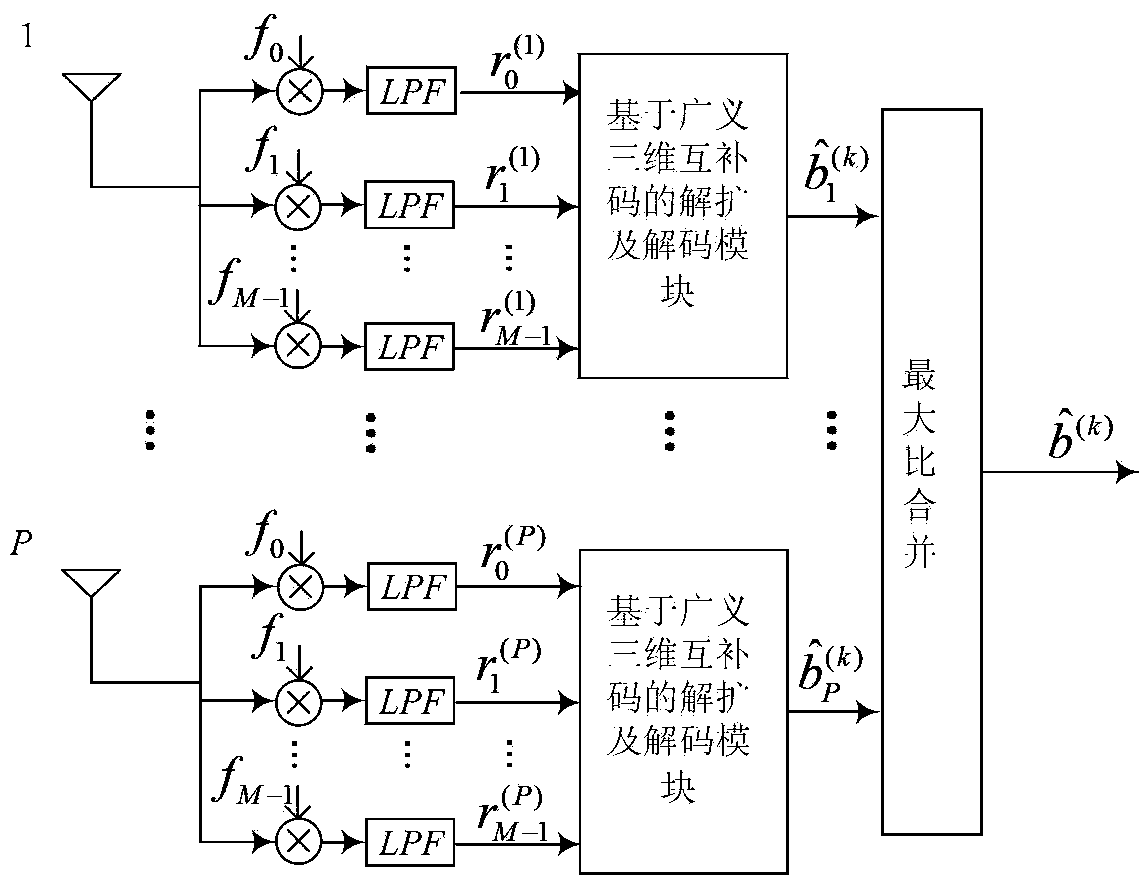A signal sending and receiving method of a cdma-mimo system using a generalized three-dimensional complementary code
A technology of signal sending and receiving methods, which is applied in the field of communication, can solve problems such as poor adaptability and high demand for system resource utilization, and achieve the effect of realizing space multiplexing and optimizing system throughput
- Summary
- Abstract
- Description
- Claims
- Application Information
AI Technical Summary
Problems solved by technology
Method used
Image
Examples
specific Embodiment approach 1
[0021] Specific implementation mode one: the following combination figure 1 and image 3 Describe this embodiment mode, a kind of signal transmission and reception method of the CDMA-MIMO system that adopts generalized three-dimensional complementary code described in this embodiment mode, its signal transmission process is:
[0022] Step 1. The initial data sent by K users are respectively subjected to space-time coding and spectrum spreading based on generalized three-dimensional complementary codes, and each user obtains A*M data streams;
[0023] Step 2: superimposing the data streams of K users corresponding to the same antenna and the same carrier, merging them into A*M data streams, and then modulating the data corresponding to the same antenna and the same carrier onto the same carrier, Finally, the data of the M carriers corresponding to the same antenna is combined, and the combined signal is sent to the wireless channel, and the signal transmission of the CDMA-MIMO...
specific Embodiment approach 2
[0028] Specific implementation mode two: the following combination figure 2 Describe this embodiment, this embodiment will further explain Embodiment 1, a signal transmission and reception method of a CDMA-MIMO system using a generalized three-dimensional complementary code described in this embodiment, the K users described in step 1 will send Space-time encoding and spectrum spreading based on generalized three-dimensional complementary codes are carried out on the initial data respectively, and each user obtains A*M data streams; the space-time encoding and spectrum spreading based on generalized three-dimensional complementary codes, wherein for each data signal The methods of coding and spreading are the same, and the specific implementation process of the coding and spreading method of each data signal is as follows:
[0029] For the initial data stream b sent by user k (k) , b (k) ∈{1,-1}, the initial data stream b (k) According to the channel condition, the service...
specific Embodiment approach 3
[0036] Specific implementation mode three: the following combination Figure 4Describe this embodiment. This embodiment will further explain Embodiment 1. In step 4 of this embodiment, the obtained P*M parallel signals will be despread and decoded based on generalized three-dimensional complementary codes. Each user obtains the corresponding P groups of data of P receiving antennas; the despreading and decoding based on generalized three-dimensional complementary codes, wherein the despreading and decoding methods of each data signal are the same, and the specific despreading and decoding of each data signal The implementation method is:
[0037] The signal received by the p-th antenna is obtained by carrier demodulation of M-channel data signals The generalized three-dimensional complementary code of one user k among the K users is used for complementary code despreading, p∈{1,...,P}:
[0038] The first step, matched filtering: the Copy A copies, using A sub-complementar...
PUM
 Login to View More
Login to View More Abstract
Description
Claims
Application Information
 Login to View More
Login to View More - R&D
- Intellectual Property
- Life Sciences
- Materials
- Tech Scout
- Unparalleled Data Quality
- Higher Quality Content
- 60% Fewer Hallucinations
Browse by: Latest US Patents, China's latest patents, Technical Efficacy Thesaurus, Application Domain, Technology Topic, Popular Technical Reports.
© 2025 PatSnap. All rights reserved.Legal|Privacy policy|Modern Slavery Act Transparency Statement|Sitemap|About US| Contact US: help@patsnap.com



